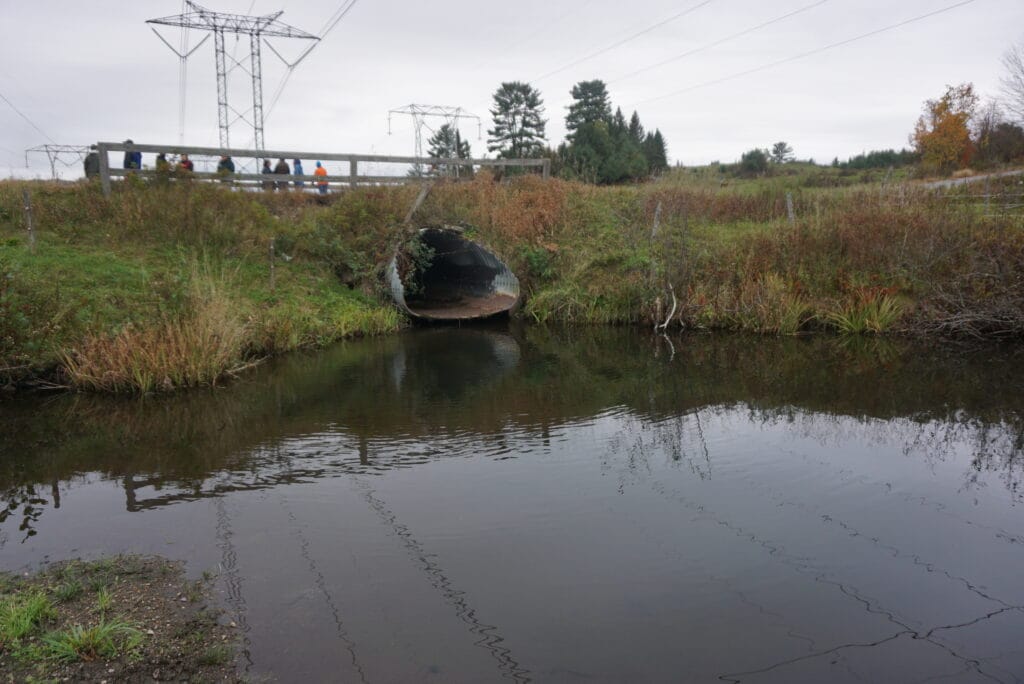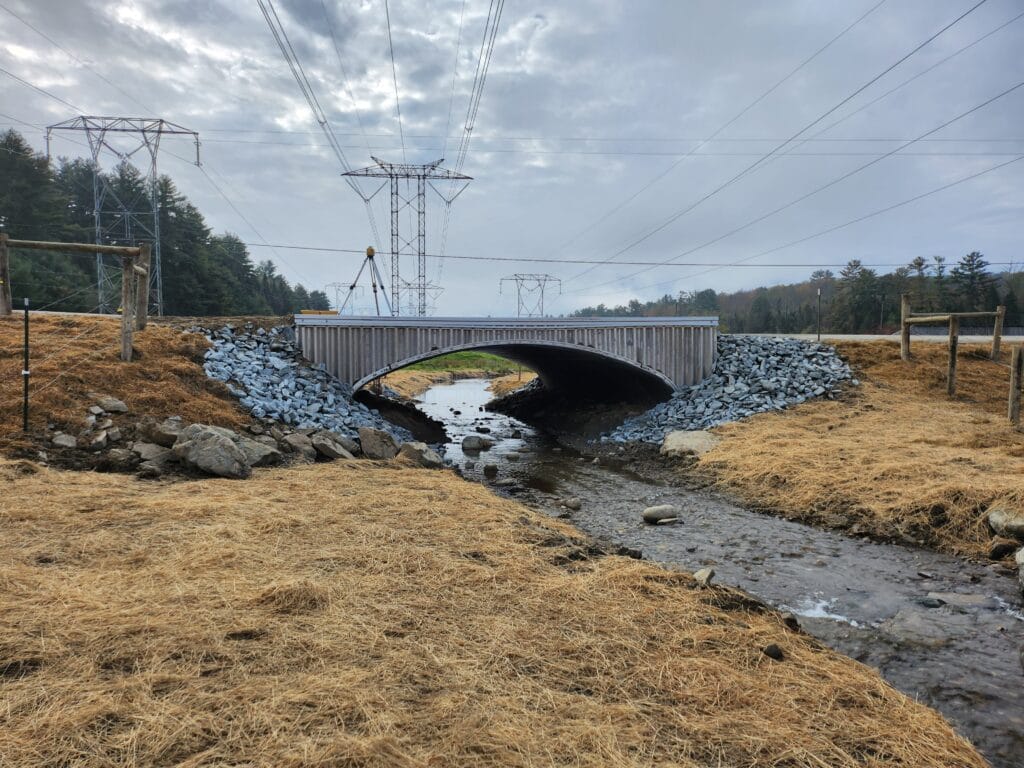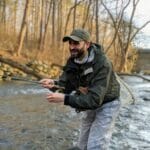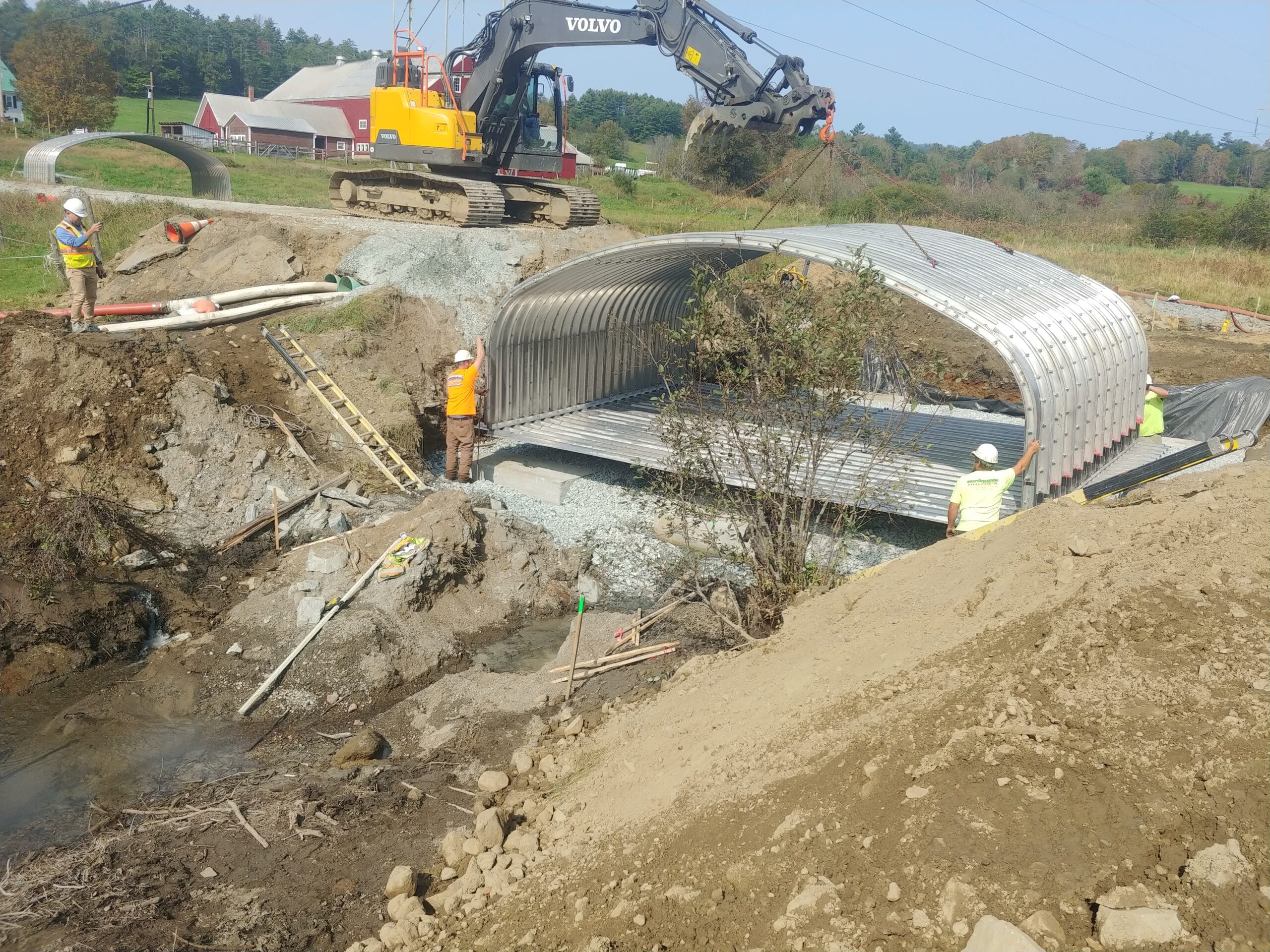Childs Brook, a tributary of the Ammonoosuc River remains challenged by a series of barriers to fish migration on its path to the Connecticut River. However, a major stride for watershed connectivity has been established by recent completion of a culvert replacement project where West Bath Road crosses the stream.
A priority list of culverts was created and a vision for improved connectivity was formed after a collective watershed assessment in 2019. That survey identified an undersized and poorly conditioned pipeline on West Bath Road as a severe barrier that would need to be decommissioned, removed, and upscaled.
Based on quotes received in 2019 from manufacturers and contractors, primary funding for these efforts was secured by the New Hampshire Department of Environmental Services Aquatic Mitigation program. An improved structure was designed and ordered with the capacity to accommodate rapidly evolving seasonal flow conditions and dramatic shifts of high and low water.

While the project was planned to handle challenging natural conditions, one thing it could not accommodate was a global pandemic and the resulting resource scarcities and industry-spanning inflation of the cost of goods and services from 2020-2022.
While the West Bath Road project remained an important local conservation mission, the project’s ballooning budget kept the project in the planning stage.
To carry this initiative forward. Trout Unlimited’s New Hampshire Project Manager, Joel DeStasio, developed a network of support when he needed it the most.
DeStasio’s relationships with folks like Ron Rhodes of the Connecticut River Conservancy and Roland Payne of the Ammonoosuc Volunteer Chapter of Trout Unlimited invigorated his determination and helped generate significant endowments to carry through to construction.
“The Child’s brook culvert replacement restoration project was an outstanding conservation effort, the result of a collaborative effort by many conservation organizations,” Payne said. “There were many delays during project, overcoming the challenges this project presented.”
Payne said the Ammonoosuc chapter was enthusiastic about helping with funding.
“Our chapter accepted funds from the Casella Ammonoosuc River Legal Settlement, which were required to be used for the improvement of water quality in the Ammonoosuc river watershed,” Payne said. “The Child’s brook culvert replacement project was a perfect match.”
An additional boost of funding was secured by way of the Long Island Sound Futures Fund provided by US Fish & Wildlife Services.

TU staff and the Town of Bath Conservation Commission worked at length with contactor Northwoods Excavating to ensure execution of the removal and replacement. The attentive construction oversight, dedication and patience of the Town of Bath Conservation Commission was another key factor in the success story of this project.
“The Conservation Commission volunteered hundreds of hours over the entire project period and despite all the many and extraordinary challenges, all of the partners stayed with the project until it was done. It shows you what a small town can accomplish,” said Judy Tumosa of the Bath Conservation Commission.
Now that work has been completed, TU staff and volunteers are eager to welcome community volunteers to help in the final phase by restoring a native riparian buffer.
The Ammonoosuc Chapter and TU staff will host a community tree planting event on May 11. Click HERE for more details in the chapter’s calendar of events.
“This was a challenging project in many ways,” DeStasio said. “It took a lot of hard work by a lot of people to finally get it completed. It was worth it to not only to improve habitat for trout and other stream species, but also to reduce the risk of infrastructure damage that was a big risk with the prior culvert in place.”



